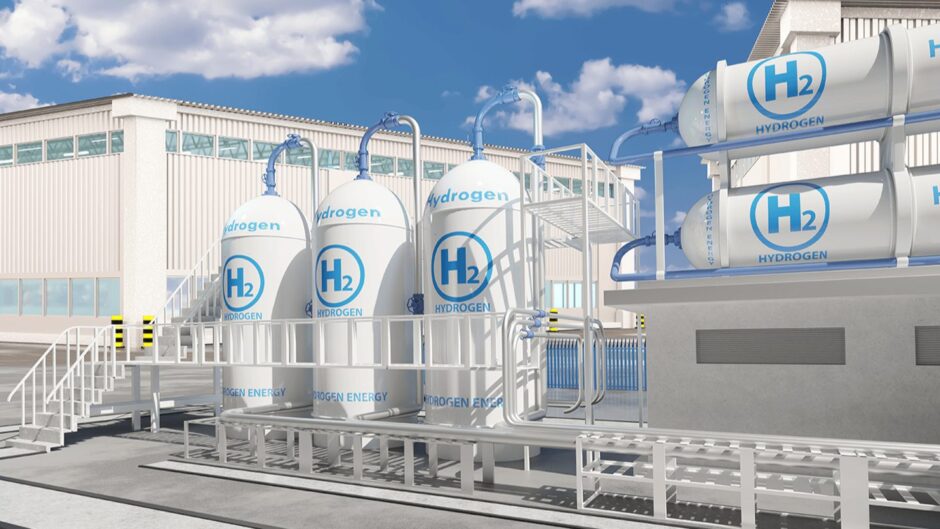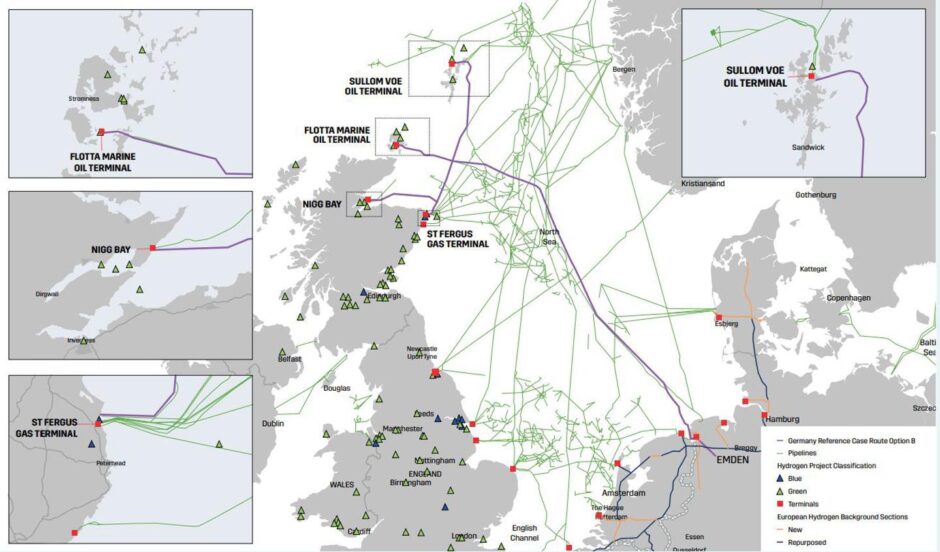
The Net Zero Technology Centre (NZTC) has outlined how Scotland can scale up hydrogen production to establish itself as a leading exporter.
The ‘Energy Hubs: Fill the Backbone’ report has focussed on infrastructure, long-term investment, and technology that can enable energy hubs in “key locations” across Scotland.
Under these recommendations, the NZTC says that the country could produce up to 35 GW of hydrogen by 2045.
Darren Gee, Programme Manager of the NZTC’s Net Zero Technology Transition Programme, said: “The Energy Hubs project marks the formulation of an actionable plan for large-scale hydrogen production, underscoring the critical need for investment, infrastructure, and technological innovation.
“To address identified challenges, accelerating the development of smaller-scale projects is crucial.
“This approach will allow us to gain experience and establish a robust supply chain capable of supporting the pivotal large-scale projects necessary to seize this opportunity.”
In a recent conversation with Energy Voice, Mr Gee voiced concerns that Scotland would be unable to fill the NZTC’s 10GW green hydrogen export pipeline.
Mr Gee said at the time: “If you look at the Scottish green economy scenario, we’re not going to fill the backbone unless we do something now that directly affects the probability of existing in the future.”
He pointed to work conducted by the Hydrogen Backbone Link’s (HBL) sister project, Energy Hubs, on the feasibility of large-scale production of green hydrogen.
The Hydrogen Backbone Link (HBL) is a Scottish Government-backed initiative to export 10GW of green hydrogen to Germany.
A recent report, released by the NZTC and funded by the Scottish Government, argued that Scottish hydrogen exports could meet up to 100% of German import demand by 2045.
NZTC outlines what Scotland must do to achieve its hydrogen export potential
This NZTC document outlines how the country can realise this potential, setting a series of checkpoints Scotland must meet.
The report calls for “rapid investment” in next-generation technologies and manufacturing processes to accelerate floating offshore wind.
Offshore wind in general has suffered a blow in the UK in recent years with the government’s most recent Allocation Round receiving no successful bids for offshore wind.
The next demand of NZTC’s Energy Hubs: Fill the Backbone document is electrolyser technology innovation.
It calls for new technology that can increase hydrogen production efficiency while cutting costs.
The NZTC also wants to see the development of highly efficient energy storage facilities with gigawatt-hour capacities.
NZTC writes that its final guideline is: “Optimising the integration of energy vectors within Energy Hubs, along with exploring further opportunities in alternative fuels and byproducts”
The first phase of the project has received support from partners including Altera, Crown Estate Scotland, EnQuest, Kellas Midstream, Port of Aberdeen, Shell, Shetland Island Council, SLB, Subsea 7, Verlume, Wood, Wood Mackenzie and Worley.
The next phase of Energy Hubs
The next phase of the programme will continue to build on the challenges outlined in the most recent report while exploring the concept of what the NZTC calls a “Super Hub”.
This concept will involve multiple large-scale hubs optimising their combined performance and achieving economies of scale. By achieving a “super hub” the NZTC argues that this will “competitive export potential.”
In his interview with Energy Voice Mr Gee explained that when the HBL scaled up to 10GW, “based on the commercial economies of scale,” the NZTC discovered that there is “a significant demand at a million tons of hydrogen that nobody is looking at.”
After discovering this perceived oversight, the NZTC’s Energy Hubs programme “pivoted” to start asking “how do we fill the backbone?” – Mr Gee added.
Recommended for you

 © Supplied by NZTC
© Supplied by NZTC © Supplied by NZTC
© Supplied by NZTC